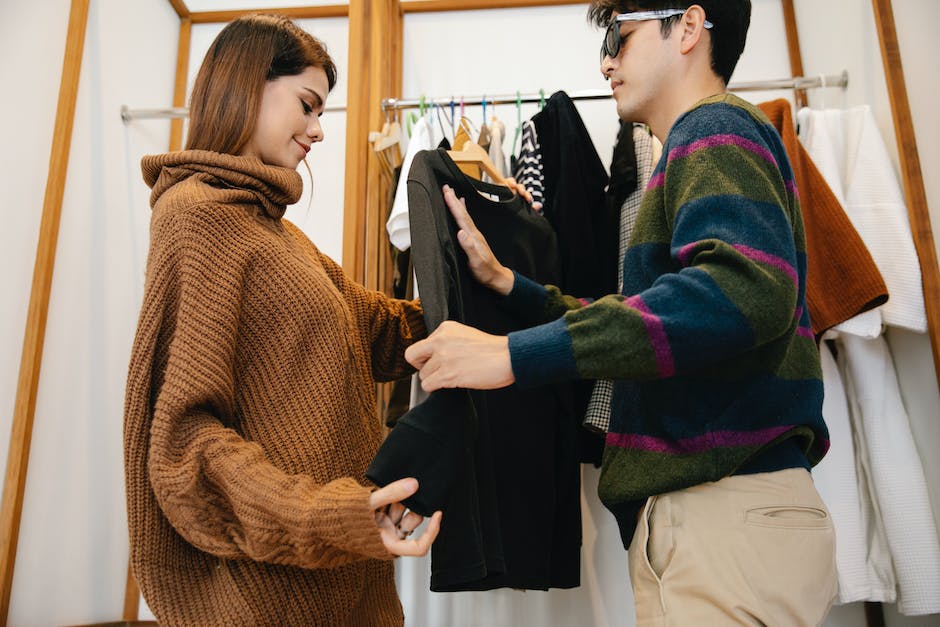In the vast social services ecosystem, clothing is a fundamental aspect that often goes unnoticed. While food, shelter, and medical care are undeniably critical, clothing serves more than just a basic need—it represents dignity, identity, and self-esteem. Clothing vouchers have emerged as a beacon of hope for those who cannot afford this basic necessity. So, let’s dive deeper into the intricate world of these vouchers.
How Government Programs Work
For states like Ohio, the clothing issue isn't trivial. Recognizing its intrinsic value, the state has rolled out various initiatives to make clothing accessible to all. The Ohio Benefits website is one such platform that not only centralizes information but also streamlines applications for several benefits, including clothing vouchers. Furthermore, the Ohio Department of Job and Family Services goes beyond clothing assistance, encompassing areas such as child care, food, Medicaid, and cash assistance.
Eligibility Criteria
Understanding the intricacies of eligibility criteria is paramount in ensuring that those genuinely in need can benefit from.
These criteria are a reflection of the government's commitment to equitable distribution based on socio-economic necessities.
-
Income Thresholds: The primary determinant for eligibility is usually the income level of an individual or a family. Most voucher programs set a specific income threshold, generally considering those under the poverty line or slightly above.
-
Residential Proof: Applicants often need to provide proof of residence to confirm they belong to the locality or state where the program is available. This may include utility bills, lease agreements, or any official document with an address.
-
Dependent Count: Families with more dependents, especially children or elderly members, might be given priority, given the higher clothing requirements.
-
Special Situations: Individuals experiencing homelessness, people with disabilities, or those undergoing temporary financial crises due to unforeseen circumstances might also qualify.
-
Documentation: Apart from income proof, potential beneficiaries might need to showcase employment status, any disabilities, and other relevant information that determines the level of need.
By understanding and meeting these criteria, applicants can seamlessly access the benefits offered by clothing voucher programs and ensure their basic clothing needs are met.
Types of Assistance Available
The world of clothing assistance is rich and diverse. There are grants, dedicated to helping individuals purchase clothing. Then there are distribution centers—spaces where clothes are collected, sorted, and redistributed to those in need.
But that's not all. Some organizations are dedicated solely to offering free clothing to low-income individuals. Each of these systems is designed with one goal in mind: to ensure that no one is deprived of clothing due to financial constraints.
Requirements for Applying for Clothing Vouchers
Securing assistance is often about more than just need. It's about meeting the criteria set by the agencies and organizations that offer these vouchers. For clothing vouchers, the focus typically lies on low-income families, those experiencing homelessness, and individuals with disabilities.
Still, eligibility is also a function of age, residency, and other demographic factors. Equally, it's heartening to note that many non-profits, government entities, and even religious institutions are stepping forward to fill the gaps and ensure widespread access to clothing vouchers.
Documentation Required to Apply for Clothing Vouchers
Any form of aid typically requires validation. When it comes to clothing vouchers, this validation comes in the form of specific documents. These could range from personal identification to evidence of income.
Notably, agencies might ask for the IRS 501(c)(3) approval letter, which certifies the tax-exempt status of nonprofit organizations. A crucial thing to remember is the time-sensitive nature of these vouchers. Once expired, they're unlikely to be renewed.
Proof of Income Needed to Receive Clothing Voucher Benefits
The essence of assistance programs like clothing vouchers lies in ensuring that aid reaches those who genuinely can't afford clothing. Hence, proof of income is paramount. Potential beneficiaries may need to furnish pay stubs, tax returns, or government assistance documents to verify their income status. Beyond mere numbers, these documents offer a glimpse into the economic challenges the individual might be facing.
Who Can Benefit from Clothing Vouchers?
The scope of beneficiaries for clothing vouchers is vast.
Low-Income Families and Individuals
Struggling families and individuals often find themselves making tough choices between essential needs. Here, clothing vouchers can act as a relief, ensuring that clothing isn't one of the sacrifices they have to make. Various entities, from Must Ministries to community centers and even local churches, are joining hands to make this possible.
People Experiencing Homelessness or Unstable Housing Situations
The challenges of homelessness extend beyond the lack of a roof overhead. Maintaining personal hygiene and decent clothing becomes an uphill battle. But with entities focusing on providing clothing specifically for this vulnerable group, hope is on the horizon.
People Suffering From Mental Illness or Disabilities
Mental illnesses or disabilities can often lead to financial strain, either due to medical expenses or the inability to work. Clothing vouchers ensure that these individuals are not further burdened by the cost of clothing. Specialized programs and organizations focus on providing tailored assistance to them.
Where Can You Go To Access Clothing Vouchers?
The beauty of the clothing voucher system lies in its widespread accessibility.
Federal and State Government Agencies
Both federal and state bodies recognize the importance of clothing. Agencies like the Ohio Department of Job and Family Services, along with federal counterparts, ensure that clothing vouchers reach those in need.
Non-Profit Organizations and Charities
These entities are the backbone of the clothing voucher system. With a deep-rooted understanding of community needs, they often tailor their programs to address local challenges.
Local Churches and Religious Organizations
The role of faith-based organizations in social services is undeniable. From organizing drives to providing direct assistance, they have consistently demonstrated their commitment to community welfare.
Leveraging Clothing Voucher Programs for Maximum Benefit
In the quest to ensure that everyone's basic clothing needs are met, understanding how to best utilize available resources becomes paramount. The effectiveness of any support system, including clothing voucher programs, doesn't merely rest in its existence but in the informed decisions beneficiaries make.
Strategic Application Timing
Often, certain periods see a surge in applications due to seasonal needs, such as winter or back-to-school times. Applying outside these peak periods can result in quicker processing times and better chances of approval.
Collaborating with Local NGOs
Numerous non-governmental organizations work hand-in-hand with state programs, offering workshops on how to apply, ensuring documentation is correct, and providing insights into optimizing the benefits. Partnering with such organizations can offer a deeper understanding and a smoother application experience.
Exploring Supplementary Programs
Apart from clothing, there might be associated needs, such as footwear or winter accessories. Some programs specifically cater to these requirements. Being aware of and accessing these supplementary programs ensures a more comprehensive coverage of one’s necessities.
Staying Updated
Policies and eligibility criteria may evolve over time. Regularly checking official websites, attending community meetings, or subscribing to newsletters can keep beneficiaries informed of any updates, ensuring they always meet the latest requirements.
Feedback and Community Involvement
States and NGOs value feedback. Participating in community discussions, providing constructive feedback, or even volunteering can lead to better refinement of these programs. This not only aids individual beneficiaries but also strengthens the community's collective well-being.
While the establishment of clothing voucher programs by states like Ohio marks a significant stride towards inclusive welfare, the onus is also on beneficiaries to navigate these resources effectively. By making informed choices and staying engaged, beneficiaries can ensure they derive the utmost benefit from these initiatives, contributing to both personal and community growth.
FAQs
1. Are there any age restrictions for availing clothing vouchers?
While some programs may prioritize children and seniors, many are open to all age groups, provided other criteria are met.
2. How often can one avail of these vouchers?
It largely depends on the issuing organization, but typically, there's a waiting period between successive vouchers.
3. Can one combine vouchers with other offers or discounts?
Vouchers typically cannot be combined with other promotions, but it's best to check with the issuing organization.
4. Are there any specifications on the type of clothing one can get with a voucher?
Generally, the choice is open. However, some programs might focus on essential clothing, especially during specific seasons.
Conclusion
The impact of clothing on an individual's life is profound. It's not just about warmth or decency; it's about dignity. Clothing vouchers, thus, are more than just pieces of paper—they are a testament to society's commitment to ensuring that no one is left without this basic necessity. With the combined efforts of state agencies, nonprofits, and faith-based organizations, we are moving closer to a world where access to clothing is a right, not a privilege.
Learn more about housing assistance for low-income felons from our resources at Gov-Relations.







